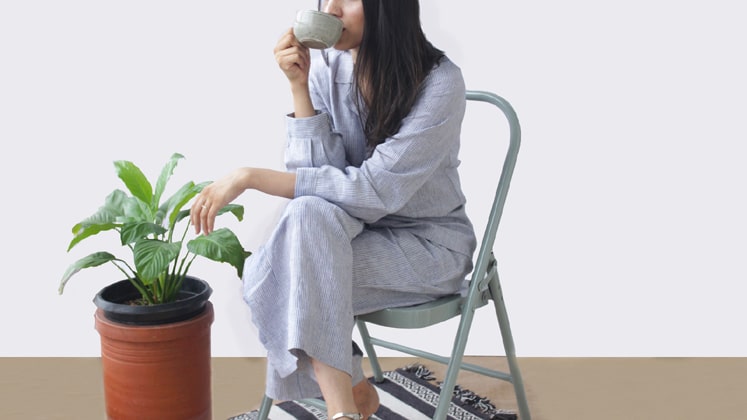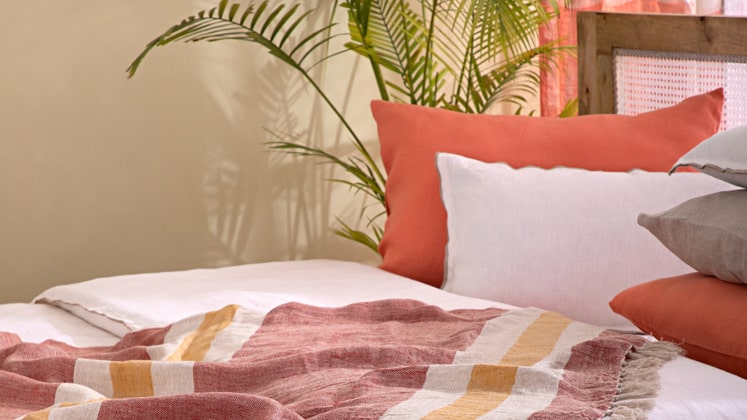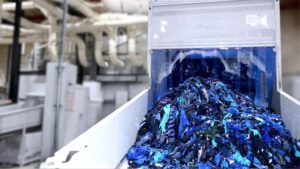
Jaya Shree Textiles, one of the pioneers of linen in India, fondly calls it the perfectionist’s fabric. Since 1949, they have worked painstakingly to make linen a household name in India and in the world through their production efforts. But, linen was always out of reach for the normal consumers and its price was a big hurdle in that context. However, over the years, the market for linen has opened with newer brands stepping in. “Unfortunately, until sometime back, linen was only the top choice for most brands for their Spring /Summer collection. It was just another fabric that most wanted to experiment with for certain collections. However, the edge we wanted to take was to make linen an all-weather, every season wardrobe staple,” mentioned Jaya Redkar, Founder, The Linen Way.
Bringing linen close to the customer
Sharing a similar concern, Anirudh Kollara, Director, Linen Trail mentioned, “Linen is the oldest fabric known to man, and it is currently still more popular in the ready-to-stitch segment. This trend had continued into the 21st century even with the popularisation of ready-to-wear in the garment market. This is primarily due to the reason that linen has a high shrinkage percentage (the garment would shrink after the first wash). Linen Trail was conceptualised to bridge the gap in the market for 100 per cent pure linen ready-to-wear apparel for men and women. Positioned as linen specialists, we strive to get the perfect fit, finish and fall for all of our pure linen pieces to ensure zero shrinkage for the product.”
“Globally linen is a very coveted fabric and stands for pure luxury and beauty among finished apparel pieces as well as home furnishings. It continues to disrupt the garment industry with its versatility and natural breathable texture, setting a new standard for perfection. The demand for linen especially in the summer months is very high in European countries and in the Americas. Newer trends in linen include blends that are often more reasonable like a linen viscose and tencel mix. At tara & I, we marry our handcrafted know-how of traditional Indian tailoring, mixing it with the structure that linen gives to create shirts, shirt dresses, trousers, unlined jackets and even a pant suit. We have used it unabashedly and these gorgeous garments in linen work perfectly as resortwear,” highlighted Reshma Dalal, Creative Director at tara and i when talking about her outlook on linen.
Also Read: Versatile and fluid: Viscose gains momentum

Anirudh further stressed on the intrinsic value for linen in the market, given it is expensive than its natural counterparts like cotton, hemp or Jute. He said, “The Indian market has a strong affinity towards luxury goods and this has helped Linen Trail grow its base of customers. Over the past one year, we have seen a 15X growth through our website LinenTrail.com. The change in consumer behaviour (the shift to online shopping) post-COVID is one the primary reasons for the spike of growth in the category coupled with the affinity for premium/luxury goods and sustainability in the Indian market.”

Reshma too agreed on the luxe factor of linen and added, “In India, the late Wendell Rodricks, the fashion guru from Goa gave his unmistakable stamp to linen creating truly chic resortwear with it since it is a sustainable fabric which uses minimal water usage. Linen is super international as quality has a price and linen is luxe. Also naturally woven fabrics do command a premium for their inherent quality and strength of fabric, especially over cotton. It allows for relaxed fits, fuss free outfits, jackets (without lining) with its weather- friendly, soft fabrics as it mixes comfort with chic effortlessly”.
Making linen for everyday
Kiran Bajaj, Co-Founder, The Linen Way however mentioned that their advent into the market was to make more people wear linen garments, “Our affordable pricing and the fuss-free cuts and silhouettes, make our products more easy going and we wanted to develop our product base to make people aware of linen and its fantastic qualities”.
Nimit Singhi, Founder at Live Linen admitted that linen has a different vibe all around. It’s more durable and high in strength, along with that it’s breathable, absorbent and simply luxurious. He added, “We realised that linen was more than just a fibre. It almost goes with every weather, style and occasion. Linen is old, but still new. This opens up a large market in India for linen products. Especially now that the new generation shoppers have started accepting linen as not only a sustainable choice but also as a stylish fabric. It is on us to give them choices. Linen has the perfect blend of elegance and minimalism. It gives luxurious as well as very classic look, which makes it a popular choice for people.”

Nimit establishes that today buyers look for value when making a purchase and rarely do they get dissuaded by the price tag. That’s why with his brand, he exclusively wants to offer value to customers by giving them ample linen choice for home and their wardrobes. With an array of brands exclusively experimenting with linen and trying to offer the same on a good price tag, consumers’ approaching a sustainable lifestyle with linen is not a far-fetched vision.
“The future is all about sustainability, and linen is a sustainable choice as it is naturally produced with less water. The need for sustainability is now more than ever and we have successfully created a business model for linen ready-to-wear online based on true demand, which has helped focus on what the customer wants while avoiding deadstock (Inventory turnaround ratio of about 6) and this has helped fuel the growth for us in the past 1 year even with the pandemic affecting our retail outlets. Retail for linen will pick up but online is where the real growth is for the category,” Anirudh signed off.







